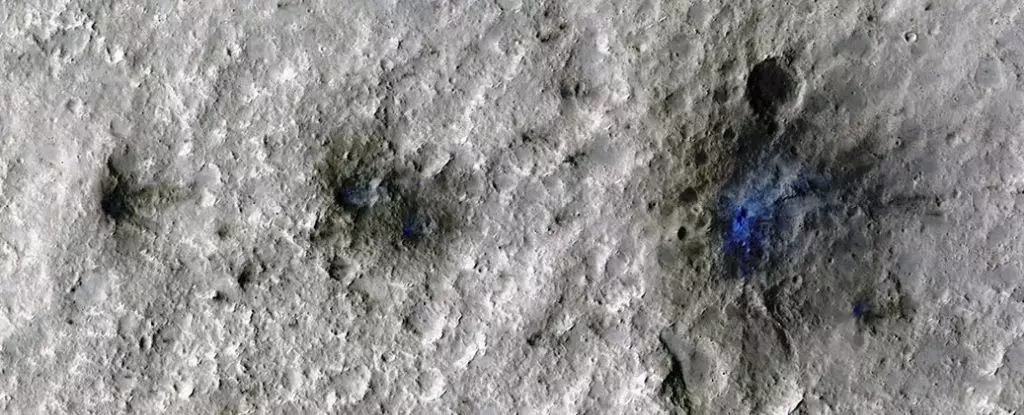Mars, often referred to as the Red Planet, is facing a constant barrage of meteorite impacts, according to new analysis. The data collected by a seismometer on Mars has unveiled that Mars experiences a much higher rate of space rocks hitting its surface than previously believed. In fact, the planet seems to be under tremendous attack from these cosmic projectiles. Scientists estimate that Mars encounters impacts from rocks the size of basketballs almost daily, based on the number of impact-related tremors detected by the Mars InSight lander. This rate is significantly higher than the previous estimates based solely on orbital imagery.
Mars InSight, during its four-year mission, not only provided valuable insights into the interior of Mars but also helped in understanding the frequency of meteorite impacts on the planet. The seismometer on Mars InSight detected faint tremors caused by rocks hitting the Martian crust. This data proves to be crucial in estimating the rate of impacts on Mars, which in turn aids in calibrating our understanding of the planet’s geological history. By analyzing the rate of crater formation on Mars, scientists can infer the age of different regions on the planet’s surface.
Unlike Earth, where most meteors disintegrate high up in the atmosphere, Mars is vulnerable to direct impacts as its atmosphere is more than 100 times thinner than that of Earth. This lack of protection makes Mars more susceptible to impacts from space rocks. Additionally, Mars’s proximity to the asteroid belt contributes to a higher rate of impacts. Previous estimations of Martian impact rates relied on satellite imagery, which was not as accurate as the data collected by Mars InSight’s seismometer.
Researchers combined the data collected from satellite imagery tracking new craters with the seismic data collected by Mars InSight. This combination allowed for a more accurate calculation of the impact rate on Mars. The findings revealed that Mars experiences between 280 and 360 impacts that create craters larger than 8 meters every year, translating to approximately one impact per day. Moreover, craters larger than 30 meters appear around once a month. This data not only helps in understanding Martian geology but also provides crucial information for future human exploration of Mars.
The analysis of meteorite impacts on Mars sheds light on the planet’s geological history and evolution. By using seismological data, scientists can create a timeline of Mars’s surface changes and infer the ages of different regions. Understanding the impact rate on Mars not only deepens our knowledge of the planet but also aids in preparations for potential human missions to Mars. Mars InSight’s mission has been instrumental in providing groundbreaking data on Mars’s interior and the frequency of meteorite impacts, leading to a better understanding of our neighboring planet.


Leave a Reply